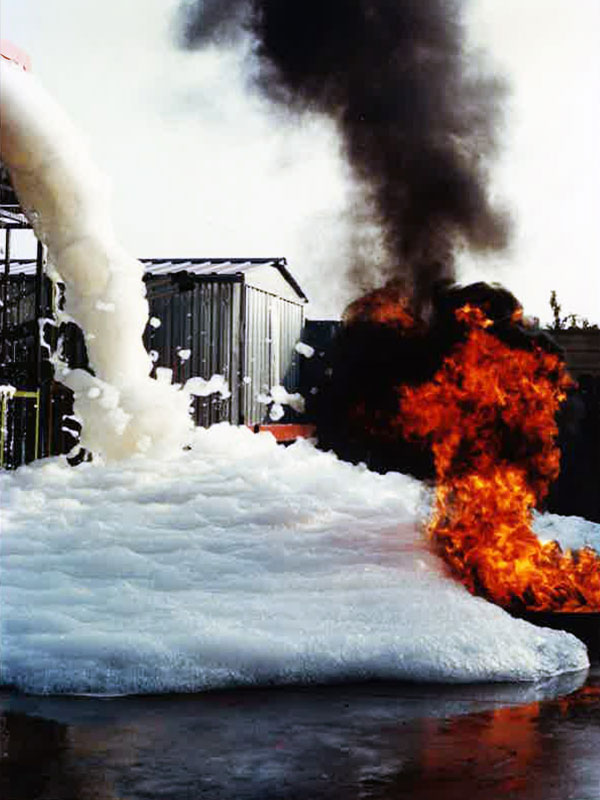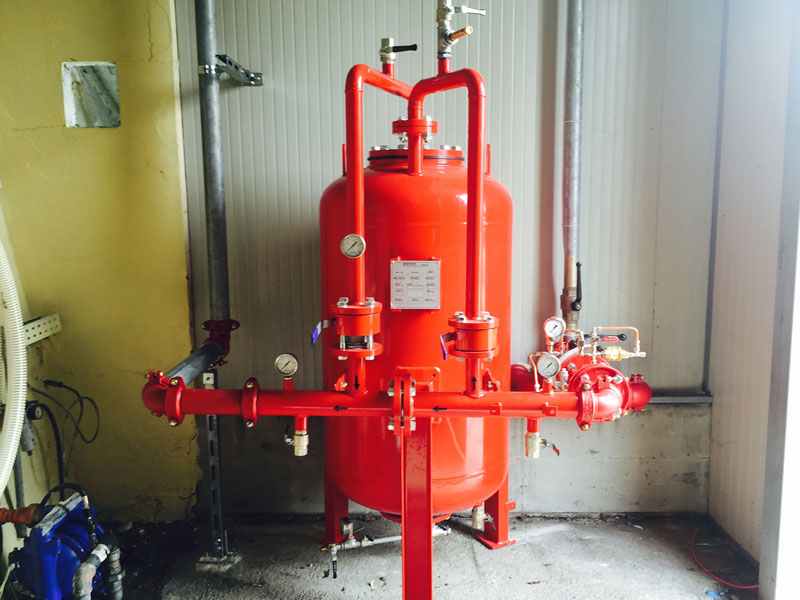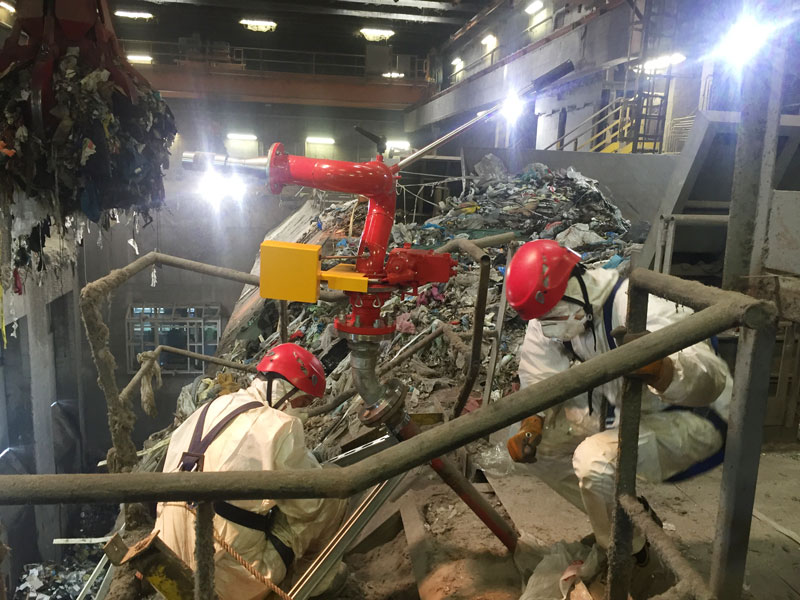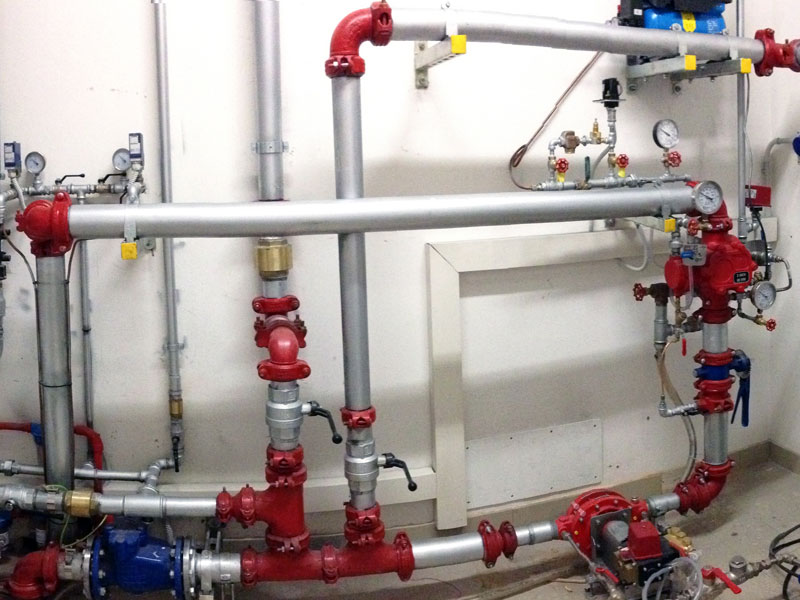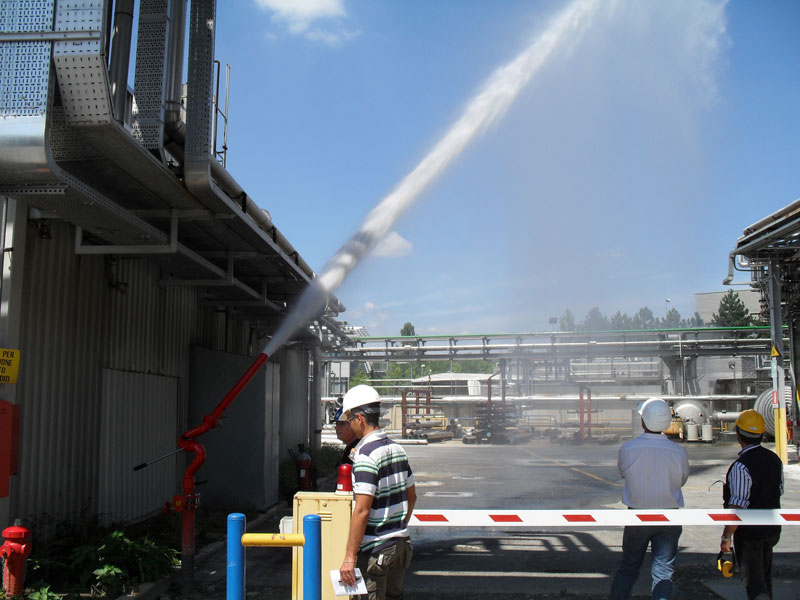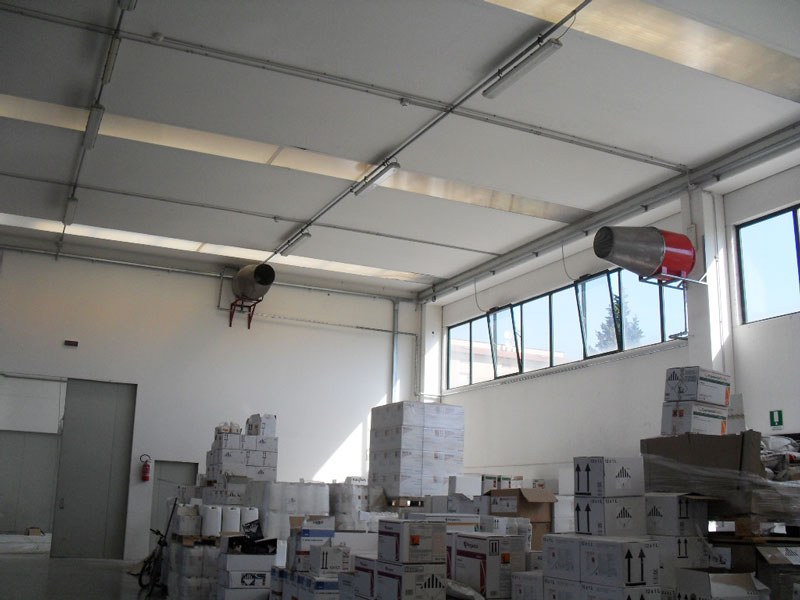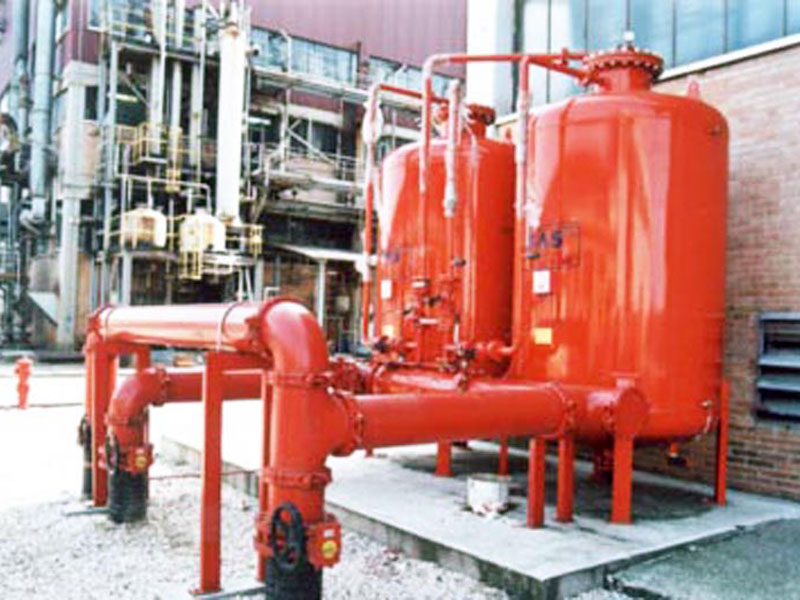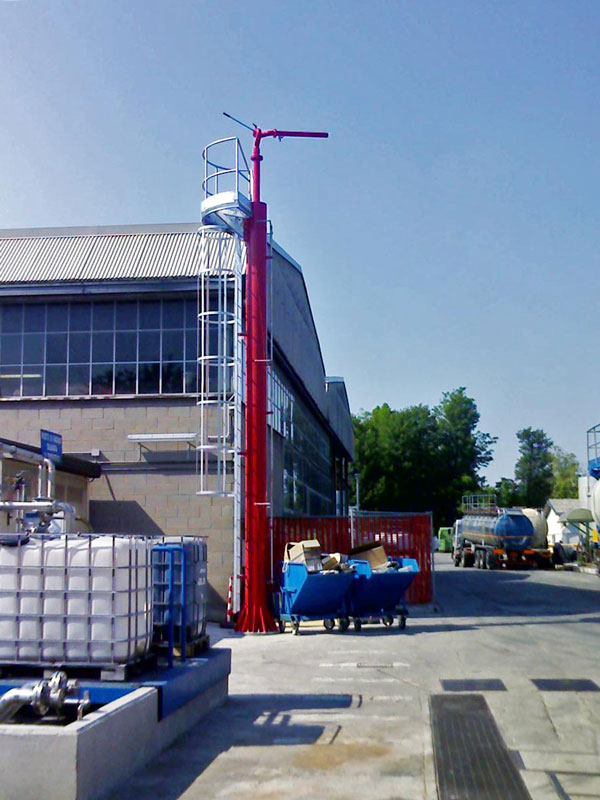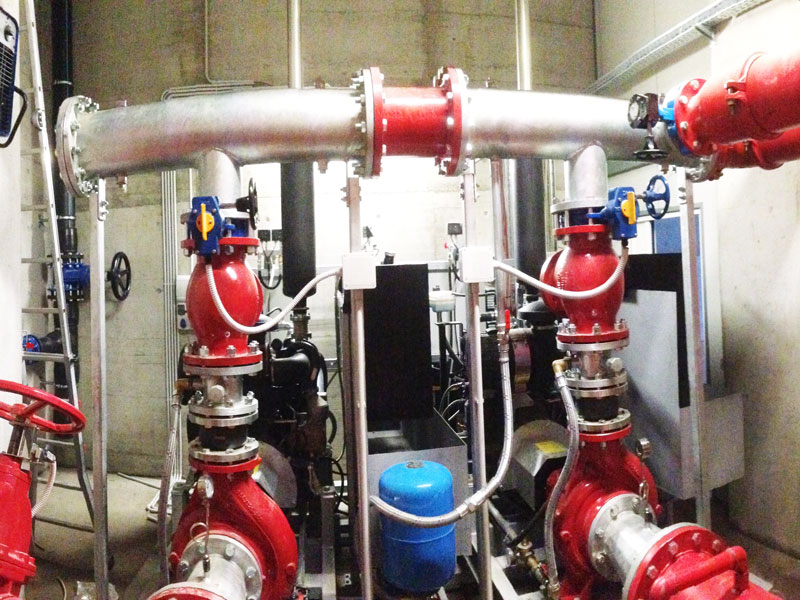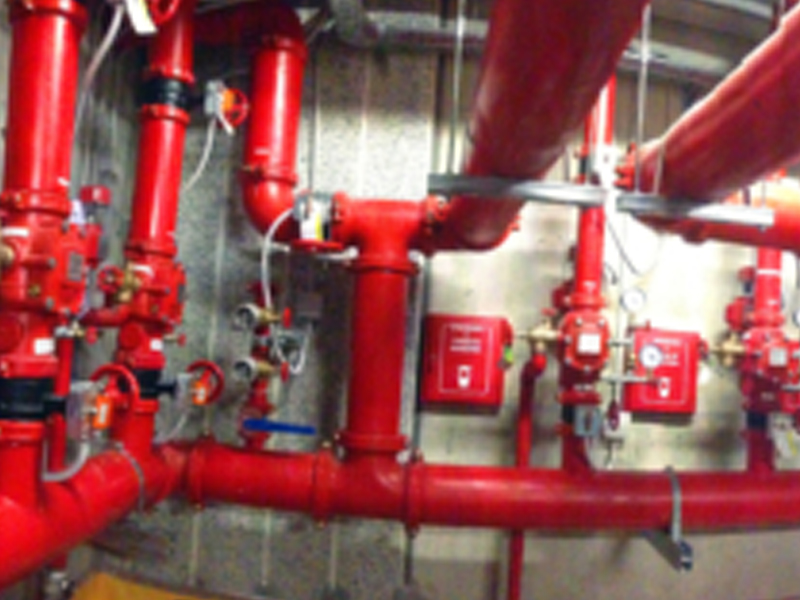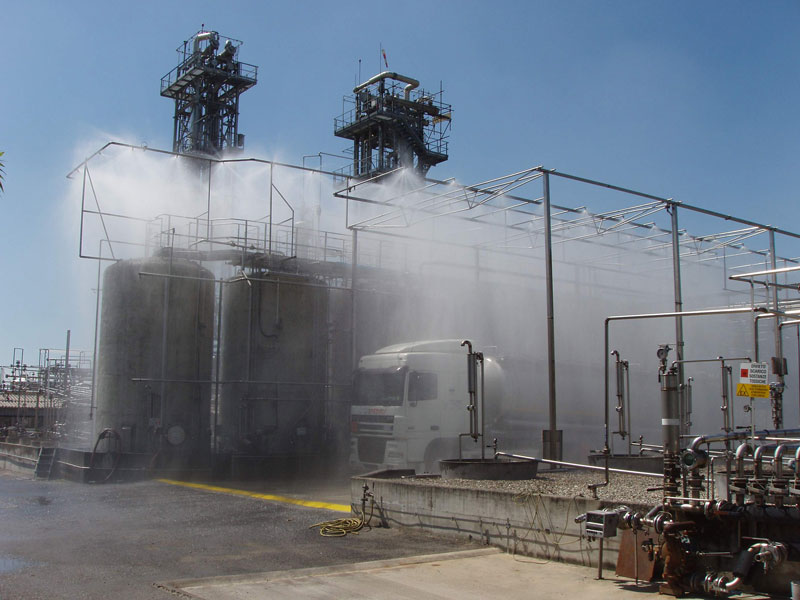Project Description
/details
On a par with water, foam is the extinguishing agent most commonly used in industry to extinguish flammable liquid fires and put out fires in large storehouses – an indispensable solution in applications where water is not enough.
The foam in firefighting systems is a mass of bubbles formed from a mixture of water, concentrated foaming agent and air. The extinguishing action is mechanical with separation of the combustible material from the combustive agent and cooling due to the presence of water.
The system is composed of automatic or manual valves, a mixing system, a pipe network and special nozzles for spreading the foam that is produced.
The water/foam mixture is the first step of the system, i.e. the moment in which the concentrated foamy liquid is mixed with the water. The fire extinguishing foam is mixed in predetermined percentages that normally vary between 3% and 6%.
This mixing is performed by specific equipment like diaphragm premixers, volumetric mixers such as FIREDOS® or self-suction mixers.
The foam extinguishers used to fight fires are protein-based (P), fluoroprotein-based (FP), synthetic film-forming (AFFF), protein-based film-forming (FFFP), alcohol resistant film-forming (AFFFAR or FFFPAR), synthetic.
There are three categories of foam systems, based on the expansion ratio:
- LOW EXPANSION: used when the speed of intervention is fundamental and the combustible material loads are low (expansion ratio up to 1:20).
They are divided into water-foam systems, a system fed through a special mixing device that produces a foamy mixture that will be delivered as the individual sprinkler heads open, and foam deluge systems, which protect delimited areas by means of generators with small flow rates. - MEDIUM EXPANSION: used when the combustible material loads are more substantial (expansion ratio up to 1:200).With a higher expansion ratio it creates a covering effect on the protected area, a system that is suitable to protect even open and windy places by means of generators with significant flow rates.
- HIGH EXPANSION: a system that, by means of generators with high flow rates, with the goal of a volumetric saturation physically removing the oxygen from the environment (expansion ratio up to 1:800), they are used to fill vast areas such as storehouses and warehouses.
/applications
Chemical and pharmaceutical industry, Oil & gas, extinguishment of flammable liquids, plastics industries, industrial machinery, putting out fires in large storehouses, painting systems, paint and solvent storehouses, localised protections.
/advantages
Flexible Installation
Extinguishing of liquid fuels
Extinguishing fires in large depots
Kicks in the first few seconds, limiting damage to a minimum
Refillable on-site
Technology sustainable over the long term
Extremely reduced laying times
Available in KITS
After-sales assistance
Available according to UNI EN 12485, NFPA, VdS and FM GLOBAL standards.
/advantages
Flexible Installation
Extinguishing of liquid fuels
Extinguishing fires in large depots
Kicks in the first few seconds, limiting damage to a minimum
Refillable on-site
Technology sustainable over the long term
Extremely reduced laying times
Available in KITS
After-sales assistance
Available according to UNI EN 12485, NFPA, VdS and FM GLOBAL standards.
/details
On a par with water, foam is the extinguishing agent most commonly used in industry to extinguish flammable liquid fires and put out fires in large storehouses – an indispensable solution in applications where water is not enough.
The foam in firefighting systems is a mass of bubbles formed from a mixture of water, concentrated foaming agent and air. The extinguishing action is mechanical with separation of the combustible material from the combustive agent and cooling due to the presence of water.
The system is composed of automatic or manual valves, a mixing system, a pipe network and special nozzles for spreading the foam that is produced.
The water/foam mixture is the first step of the system, i.e. the moment in which the concentrated foamy liquid is mixed with the water. The fire extinguishing foam is mixed in predetermined percentages that normally vary between 3% and 6%.
This mixing is performed by specific equipment like diaphragm premixers, volumetric mixers such as FIREDOS® or self-suction mixers.
The foam extinguishers used to fight fires are protein-based (P), fluoroprotein-based (FP), synthetic film-forming (AFFF), protein-based film-forming (FFFP), alcohol resistant film-forming (AFFFAR or FFFPAR), synthetic.
There are three categories of foam systems, based on the expansion ratio:
- LOW EXPANSION: used when the speed of intervention is fundamental and the combustible material loads are low (expansion ratio up to 1:20).
They are divided into water-foam systems, a system fed through a special mixing device that produces a foamy mixture that will be delivered as the individual sprinkler heads open, and foam deluge systems, which protect delimited areas by means of generators with small flow rates. - MEDIUM EXPANSION: used when the combustible material loads are more substantial (expansion ratio up to 1:200).With a higher expansion ratio it creates a covering effect on the protected area, a system that is suitable to protect even open and windy places by means of generators with significant flow rates.
- HIGH EXPANSION: a system that, by means of generators with high flow rates, with the goal of a volumetric saturation physically removing the oxygen from the environment (expansion ratio up to 1:800), they are used to fill vast areas such as storehouses and warehouses.
/applications
Chemical and pharmaceutical industry, Oil & gas, extinguishment of flammable liquids, plastics industries, industrial machinery, putting out fires in large storehouses, painting systems, paint and solvent storehouses, localised protections.



